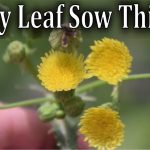Mushroom hunting is a great way to get outdoors and explore nature. Fall is a great time of year to go mushroom hunting, as cooler temperatures and moisture create the perfect conditions for mushrooms to grow. One of the most sought-after mushrooms during the fall season is the Maitake or Hen of The Woods mushroom (Grifola frondosa). This mushroom is highly prized for its unique flavor and texture.
When harvesting Maitake, it’s important to check the color of the fronds and ensure that the pores are nice and tight to indicate freshness. It’s also important to take a look at the base of the mushroom to make sure it is not too woody. It’s best to harvest Maitake when it is young and tender.
In addition to Maitake, there are several other species of mushrooms that can be found during the fall season. One such species is the Pear Shaped Puffball (Calvatia cyathiformis). When harvesting this mushroom, it’s important to cut it in half to ensure that it is white and doesn’t have a stem developing inside. Another species of mushroom that can be found during the fall season is the Bolete (Boletus edulis). This mushroom has a meaty texture and is highly prized for its flavor.
Finally, it’s important to be aware of the highly poisonous Amanita mushroom (Amanita phalloides). This mushroom has a distinct white cap with yellowish-green spots. It’s important to be aware of this species and avoid harvesting it as it can cause serious illness or even death if ingested.
Overall, fall is a great time of year for mushroom hunting. There are a variety of species that can be found during this season, including Maitake, Pear Shaped Puffball, Bolete, and Amanita. When harvesting mushrooms, it’s important to be aware of the characteristics of each species and ensure that they are fresh and safe to eat.



GIPHY App Key not set. Please check settings